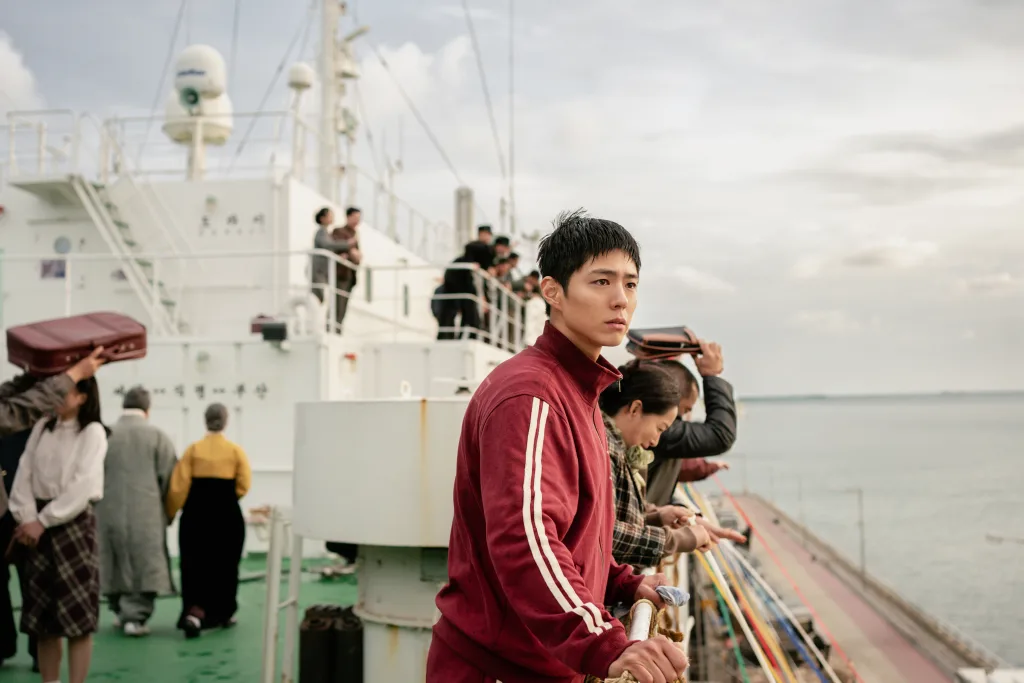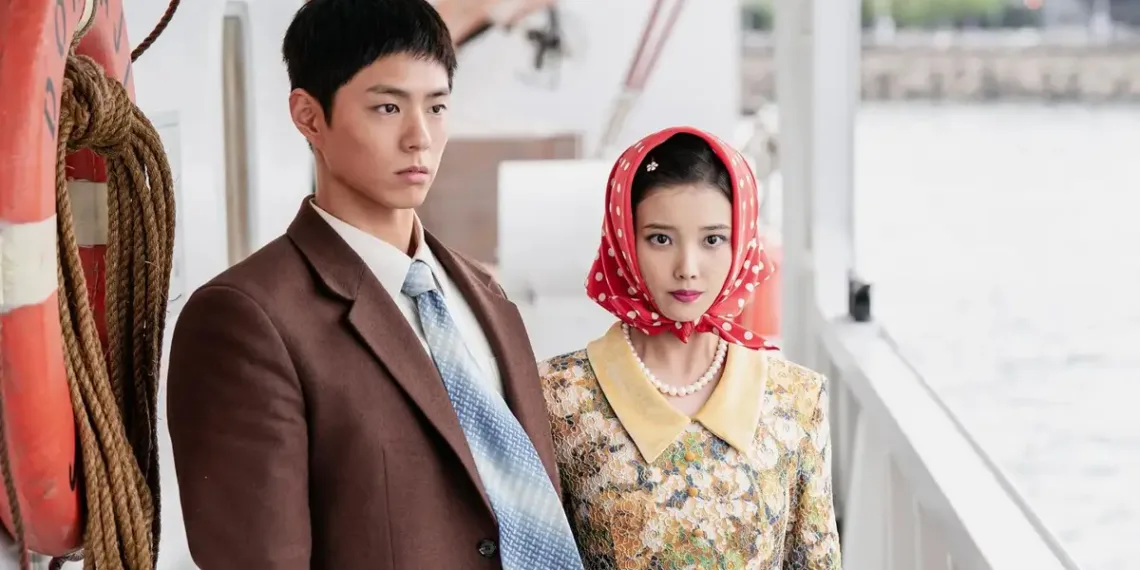In the vast orchard of Netflix’s global content, a new fruit has ripened, promising viewers a taste of something truly unique. “When Life Gives You Tangerines,” the streaming giant’s latest Korean drama, is more than just another addition to the ever-growing list of K-dramas. It’s a cultural odyssey, a historical tapestry, and a symbolic journey all wrapped in the vibrant peel of Jeju Island’s most famous fruit. As the series prepares to unveil its final four episodes on March 28, 2025, it has already captured the hearts of viewers worldwide, offering a slice of Korean life that’s as sweet, tangy, and complex as the tangerines themselves.
Table of Contents
Set against the breathtaking backdrop of Jeju Island, this series does more than tell a story; it immerses viewers in a world where tradition and modernity dance in delicate balance, where the ocean’s bounty and fury shape lives, and where love endures across generations. From the resilient haenyeo (female divers) to the island’s shamanic traditions, from the echoes of historical trauma to the pursuit of dreams beyond the sea, “When Life Gives You Tangerines” is a masterclass in storytelling that honors its cultural roots while speaking to universal human experiences.

As we dive deeper into the layers of meaning woven throughout this series, we’ll explore how its creators have skillfully blended Jeju’s unique dialect, historical events, and cultural symbols to create a narrative that’s as enriching as it is entertaining. Whether you’re a K-drama aficionado, a cultural enthusiast, or simply someone who appreciates storytelling at its finest, join us as we unpeel the hidden meanings, historical references, and symbolic richness that make “When Life Gives You Tangerines” a must-watch cultural phenomenon.
From Jeju’s Shores to Global Screens: Decoding the Cultural Tapestry of “When Life Gives You Tangerines”
“When Life Gives You Tangerines” is not just a feast for the eyes; it’s a banquet for the mind and soul, offering viewers a deep dive into the rich cultural heritage of Jeju Island. At its core, the series is a love letter to resilience, family bonds, and the indomitable human spirit, all set against the backdrop of one of Korea’s most unique landscapes.
A Linguistic Love Note to Jeju
The very title of the series, “When Life Gives You Tangerines,” is a clever play on words that immediately sets the tone for the cultural journey ahead. In the Jeju dialect, “Pokssak Sogatsuda” literally translates to “Thank you for your hard work,” a phrase that encapsulates the series’ themes of perseverance and gratitude. This linguistic nod is more than just clever wordplay; it’s a gateway into the distinct cultural identity of Jeju Island, inviting viewers to appreciate the nuances that set this community apart from mainland Korea.

The Haenyeo: Jeju’s Aquatic Amazons
Central to the narrative and cultural fabric of the show are the haenyeo, Jeju’s legendary female divers. These women, who harvest the sea’s bounty without modern breathing apparatus, are not merely background characters but living symbols of the island’s resilience and unique social structure. Through characters like Ae-sun’s mother and aunts, the series paints a vivid picture of a semi-matriarchal society where women’s economic contributions have historically held significant weight.
The portrayal of the haenyeo in “When Life Gives You Tangerines” offers viewers a window into a world where gender roles and societal expectations diverge from traditional Korean norms. It’s a powerful reminder of the diversity within Korean culture and a celebration of female strength and independence.
Historical Echoes: The Shadow of the Jeju Uprising
While not explicitly at the forefront, the series’ setting in 1951 places it in the aftermath of the devastating Jeju Uprising of 1948-1949. This historical context adds layers of depth to the characters’ motivations and the overall atmosphere of the early episodes. The unspoken trauma of this period infuses the narrative with a sense of resilience and the quiet determination to move forward in the face of unspeakable loss.
Symbolism: More Than Meets the Eye
The symbolic richness of “When Life Gives You Tangerines” adds depth to every frame:
- Tangerines: Beyond being Jeju’s famous fruit, tangerines symbolize the bittersweet nature of life itself. They represent how even the sourest experiences can be transformed into something warm and nourishing, much like the popular tangerine-infused tea in Korean culture.
- The Ocean: A dual symbol of life-giving abundance and unpredictable danger. It provides livelihoods but also takes lives, embodying the precarious balance of existence on the island.
- Shamanic Traditions: Through characters like Gwan-sik’s grandmother, the series subtly explores Jeju’s unique spiritual landscape, highlighting the island’s deep connection to nature and local deities.
A Generational Saga of Love and Sacrifice
At its heart, “When Life Gives You Tangerines” is a story of enduring love and generational sacrifice. The relationship between Ae-sun and Gwan-sik serves as the emotional anchor, their unwavering bond a testament to love’s power to overcome adversity. Parallel to this, the series explores the depths of parental love, from Ae-sun’s mother’s sacrifices to Ae-sun’s own compromises for her children’s futures.
This theme culminates powerfully in episode 8, where Ae-sun and Gwan-sik sell their house to fund their daughter Geum-myeong’s studies in Japan. It’s a moment that encapsulates the series’ exploration of progress, the changing roles of women in Korean society, and the bittersweet nature of watching one’s children pursue dreams beyond the confines of the island.
To help viewers navigate the rich tapestry of cultural elements in “When Life Gives You Tangerines,” here’s a quick reference guide:
| Cultural Element | Significance in the Series |
|---|---|
| Jeju Dialect | Reflects the island’s unique identity and sets the tone for the narrative |
| Haenyeo (Female Divers) | Symbolize female strength, economic independence, and Jeju’s distinct social structure |
| Tangerines | Represent resilience, the bittersweet nature of life, and Jeju’s cultural identity |
| Shamanic Traditions | Highlight Jeju’s spiritual connection to nature and local deities |
| The Ocean | Dual symbol of life-giving resources and unpredictable danger |
| Historical Context (Jeju Uprising) | Adds depth to characters’ motivations and the series’ atmosphere |
As “When Life Gives You Tangerines” prepares to release its final episodes, it stands as a testament to the power of storytelling rooted in cultural authenticity. By weaving together historical context, symbolic richness, and universal themes of love and resilience, the series offers viewers a deeply immersive experience that goes far beyond typical drama fare.
Conclusion
As “When Life Gives You Tangerines” reaches its conclusion, it leaves viewers with much more than just a story. It offers a rich, culturally immersive experience that celebrates the unique heritage of Jeju Island while exploring universal themes of love, sacrifice, and resilience. Through its careful blend of historical context, symbolic depth, and authentic cultural representation, the series stands as a testament to the power of storytelling rooted in specific cultural experiences yet resonating with global audiences.
For those who have followed Ae-sun and Gwan-sik’s journey from the sun-drenched tangerine groves to the depths of the sea, the final episodes promise not just a conclusion to their story, but a deeper appreciation for the cultural tapestry that has been woven throughout the series. As we prepare to bid farewell to these characters, we’re reminded of the series’ central message: that life, like a tangerine, can be both sweet and sour, but it’s how we choose to savor it that truly matters.
“When Life Gives You Tangerines” is more than just another entry in Netflix’s vast library; it’s a cultural artifact, a time capsule of Jeju’s spirit, and a reminder of the power of stories to bridge gaps between cultures. As the final episodes air on March 28, 2025, viewers around the world will undoubtedly find themselves transported to the shores of Jeju, their hearts full of the warmth, complexity, and enduring spirit of this remarkable island and its people.
Blackpink Jisoo Teases Fans with Exclusive ‘Newtopia’ Behind-the-Scenes Photos
Frequently Asked Questions
Q1: Why is the series titled “When Life Gives You Tangerines” and what does it mean?
A: The English title is a translation of the Jeju dialect phrase “Pokssak Sogatsuda,” which literally means “Thank you for your hard work.” This title cleverly combines the island’s famous tangerines with a local expression of gratitude and resilience, encapsulating the series’ themes of making the best of life’s challenges.
Q2: How does the series incorporate Jeju Island’s unique culture and history?
A: The series deeply integrates Jeju’s culture through several elements:
Portrayal of the haenyeo (female divers) and their significant role in the island’s economy and society
Exploration of local shamanic traditions and spiritual beliefs
Use of the Jeju dialect, highlighting the island’s linguistic uniqueness
Subtle references to historical events like the Jeju Uprising, providing context for the characters’ experiences








